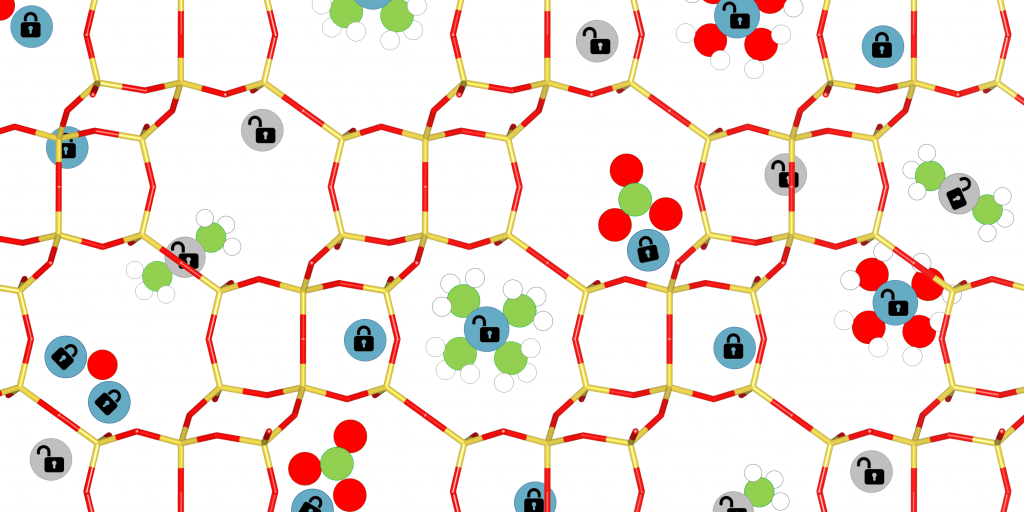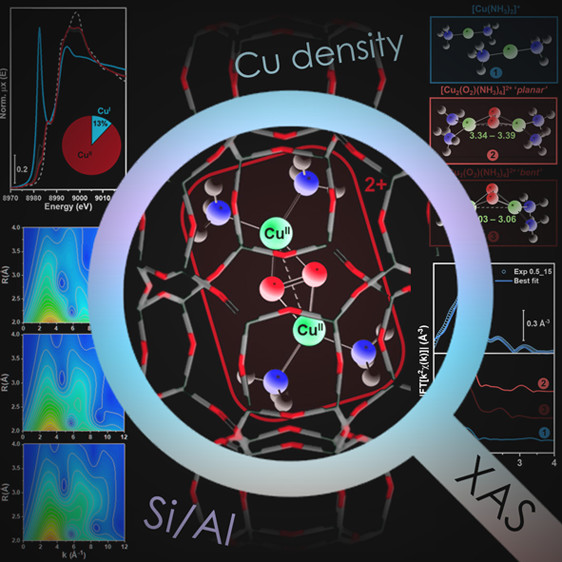
Publications

⭐New!⭐ on Chemical Science: Influence of ion mobility on the redox and catalytic properties of Cu ions in zeolites

This contribution aims at analysing the current understanding about the influence of Al distribution, zeolite topology, ligands/reagents and oxidation state on ions mobility in Cu-zeolites, and its relevance toward reactivity of the metal sites. The concept of Cu mobilization has been originally observed in the presence of ammonia, favouring the activation of oxygen by formation of NH3 oxo-bridged complexes in zeolites and opening a new perspective about the chemistry in single-site zeolite-based catalysts, in particular in the context of the NH3-mediated Selective Catalytic Reduction of NOx (NH3-SCR) processes. A different mobility of bare Cu+/Cu2+ ions has been documented too, showing for Cu+ a better mobilization than for Cu2+ also in absence of ligands. These concepts can have important consequences for the formation of Cu-oxo species, active and selective in other relevant reactions, such as the direct conversion of methane to methanol. Here, assessing the structure, the formation pathways and reactivity of Cu-oxo mono- or multimeric moieties still represents a challenging playground for chemical scientists. Translating the knowledge about Cu ions mobility and redox properties acquired in the context of NH3-SCR reaction into the field of direct conversion of methane to methanol can have important implications for a better understanding of transition metal ions redox properties in zeolites and for an improved design of catalysts and catalytic processes.
Authors: Matteo Signorile, Elisa Borfecchia, Silvia Bordiga and Gloria Berlier
on the Journal of Physical Chemistry Letters: Assessing the Influence of Zeolite Composition on Oxygen-Bridged Diamino Dicopper(II) Complexes in Cu-CHA DeNOx Catalysts by Machine Learning-Assisted X-ray Absorption Spectroscopy

Cu-exchanged chabazite is the catalyst of choice for NOx abatement in diesel vehicles aftertreatment systems via ammonia-assisted selective catalytic reduction (NH3− SCR). Herein, we exploit in situ X-ray absorption spectroscopy powered by wavelet transform analysis and machine learning-assisted fitting to assess the impact of the zeolite composition on NH3-mobilized Cu-complexes formed during the reduction and oxidation half-cycles in NH3− SCR at 200 °C. Comparatively analyzing well-characterized Cu-CHA catalysts, we show that the Si/Al ratio of the zeolite host affects the structure of mobile dicopper(II) complexes formed during the oxidation of the [CuI (NH3)2] + complexes by O2. Al-rich zeolites promote a planar coordination motif with longer Cu−Cu interatomic distances, while at higher Si/Al values, a bent motif with shorter internuclear separations is also observed. This is paralleled by a more efficient oxidation at a given volumetric Cu density at lower Si/Al, beneficial for the NOx conversion under NH3−SCR conditions at 200 °C.
Authors: Andrea Martini; Chiara Negri; Luca Bugarin; Gabriele Deplano; Reza K. Abasabadi; Kirill A. Lomachenko; Ton V. W. Janssens; Silvia Bordiga; Gloria Berlier; Elisa Borfecchia
